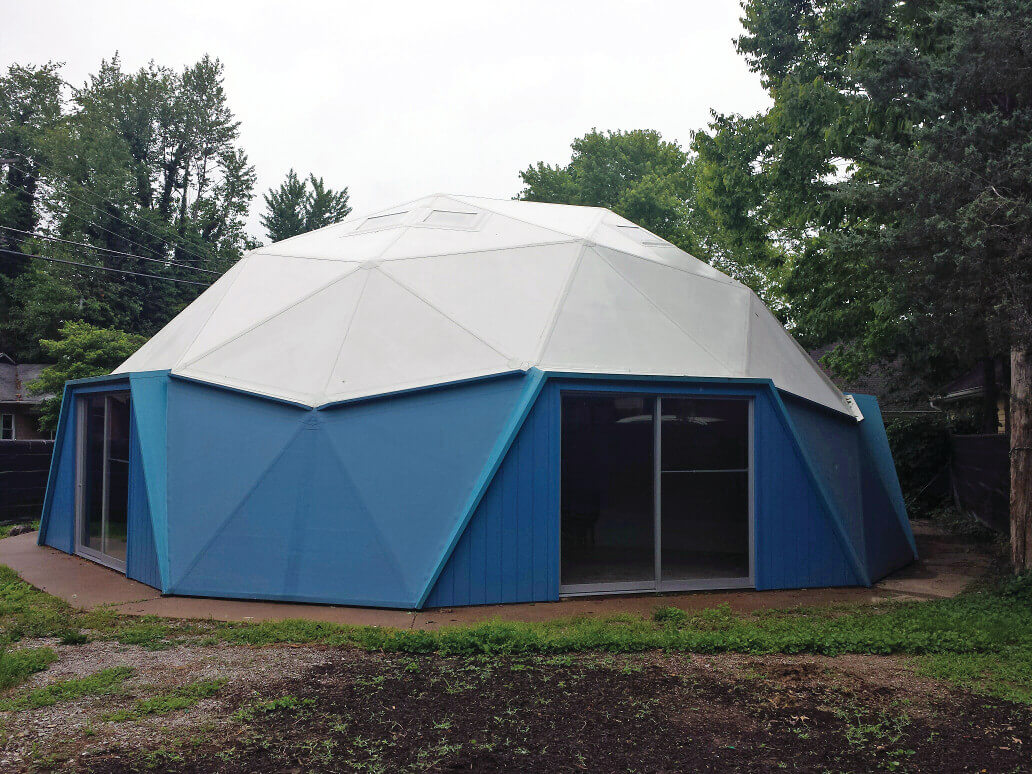Buckminster Fuller debuted his geodesic dome concept at the 1954 Milan Triennale as a large cardboard model. The showcase turned into a career-long examination of spherical housing prototypes and energy efficient building methods. Fuller eventually resided in one of his realized designs for several years. Today, the nonprofit that runs “Bucky Dome,” Fuller’s residence from 1960 to 1971, has plans for a visitor center and museum on the site.
The idea for a visitor’s center at Fuller’s self-designed house in Carbondale, Illinois, traces back over 20 years: In 1990, one of Fuller’s students Harry Frederick William Perk purchased the house of his former teacher with a vision for a place where the public could learn about the design, Fuller’s legacy, and the ahead-of-its-time methods his instructor pioneered. Perk started the R. Buckminster Fuller Dome Home Not-For-Profit and raised funds to restore the dome and start construction on a visitor center. (Perk passed away in 2019.)
The 2,400-square-foot visitor center and museum planned for the site will be designed by architect Thad Heckman of Design Works in partnership with Mighty Buildings, a housing construction company that uses prefab and 3D printing systems. It will be situated on the property so its classrooms, archival storage, and library can be in dialogue with the Bucky Dome. In addition to research and exhibition space, the new 3D-printed visitor center will also house a gift shop and small kitchen.
Similar to Fuller’s designs, the visitor center considers innovative construction methods and sustainable practices. It champions Fuller’s principle of “doing more with less.” In designing geodesic domes Fuller found the structures capable of maximizing interior space while using the least amount of surface area. This same principle is applied in 3D printing, a building system proven to reduce construction waste.

“3D printing also offers the capability to introduce complex geometric designs, a characteristic that is emblematic of Fuller’s architectural legacy,” Chris Murphy, chief strategy officer at Mighty Buildings, told AN. “His geodesic domes epitomize a blend of geometric ingenuity and structural efficiency.”
The visitor center will be realized as a low-lying structure clad with “parametric panels” designed by Heckman that pull from the patterns found in Fuller’s original designs. The panels will be 3D printed offsite and assembled onsite. Mighty Builds’ Mighty Kit System—a set of prefabricated building assemblies consisting of a superstructure, 3D-printed panels, insulation, steel framing, and doors and windows—will be used to construct the visitor center. By using assembled building parts and materials, the project aims to cut down on construction time and minimize waste on the building site.
The easing of construction timelines and thoughtfulness toward building waste are deeply rooted in Fuller’s original schemes and remain applicable today.
“His advocacy for resource conservation, design efficiency, and innovative problem-solving continues to be an important inspiration in tackling today’s housing and environmental challenges,” Murphy added. “This project serves as a tribute to Fuller’s legacy, demonstrating how his design philosophies can be applied with modern technology to continue pushing the boundaries of what’s possible in the built environment.”











